Last winter when I scheduled a talk/walk on lichens and another on mosses for this summer, I wasn’t sure what the public response would be, and so it was a pleasant surprise that both were well received. While Maine Master Naturalist Jeff Pengel spoke to us and then led us down the trail taking a close-up look at lichens in July, Ralph Pope introduced many to mosses for the first time on August 1. And then he took us only part way down a trail on August 2, for there were samples everywhere–both at our feet and sometimes even eye level.

Ralph is the author of Mosses, Liverworts and Hornworts: A Field Guide to Common Bryophytes of the Northeast. He began thinking about writing such a guide while teaching a course on bryophyte identification at Antioch University New England. “I realized that the available resources were not inviting for a beginning student,” says Ralph.
His book begins with a description of bryophyte biology, taxonomy and ecology for those who are interested. As he states on page 11, “Mosses, hornworts, and liverworts, the three groups making up the bryophytes, evolved from the aquatic ancestors of modern green algae and represent the beginnings of terrestrial plant life, eventually giving rise to our amazingly diverse array of vascular plants.” Beyond words. Beyond our world.
I’ve used another guide, but this one seems so much easier to follow for Pope has formatted it into divisions that make sense to my brain–Spagnaceae: peat mosses; Acrocarpous: (acro-high; carpous-fruit) upright-growing mosses with fruits on the top; Pleurocarpous: (pleuro-side; carpous-fruit) mat-forming mosses with fruits extended on side branches; Liverworts (body of plant flat-thalloid; leaves in two rows-leafy) and Hornworts (uncommon–in fact, I’ve yet to meet one). These are in color-coded sections, making the process even easier.
And while each section begins with a key, for those who don’t like such things, there is a description of preferred habitat, family characteristics and then the species presented in alphabetical order (think Latin, for as Ralph pointed out, we’ve been spoiled by common names for birds and think that everything should have such, but for some species there are several common names, thus making it difficult to know for sure across the globe that we are talking about the same species.–Guess I need to get my Latin on) and illustrated with fabulous photographs.
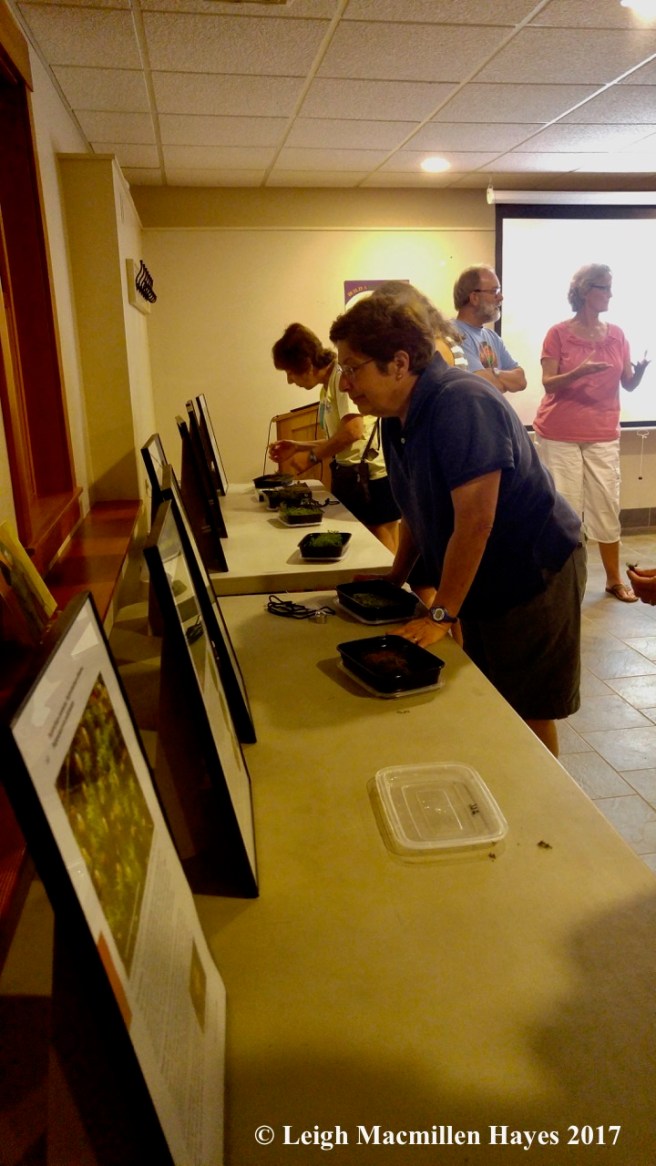
With a few slides, Ralph introduced the audience to bryophytes, which are the most primitive of plants having no roots, no flowers, and no woody structure. They are usually green (as opposed to the gray-green hues of lichens), translucent as they are only one cell thick, and often have spore capsules that last a long time.

After the talk, he encouraged the audience to take a closer look at species gathered that day along the Westways Trail at the Greater Lovell Land Trust’s Heald and Bradley Ponds Reserve.

Behind each species an enlarged poster of the related page from his book included a description, similar species, range and habitat, and meaning of names or tips for identification.

A crowd of 25 spanning ages 5 to 25 a few times over, stepped onto the Westways Trail with Ralph the next morning.

His combined knowledge and humor kept us all enraptured with the world below our feet. To get a sense of Ralph’s voice is this sample from page 7, “Remember the old adage that if you happen to lose your compass, your iPhone, your GPS, your ability to see the sun, and your sense of direction, moss growth will show you the north side of a tree? Well, keep the compass handy, but the north side of a tree trunk does indeed get less desiccating sunlight than the rest of the tree trunk, so it just might have more moss growth. Score one for the Boy Scouts.”
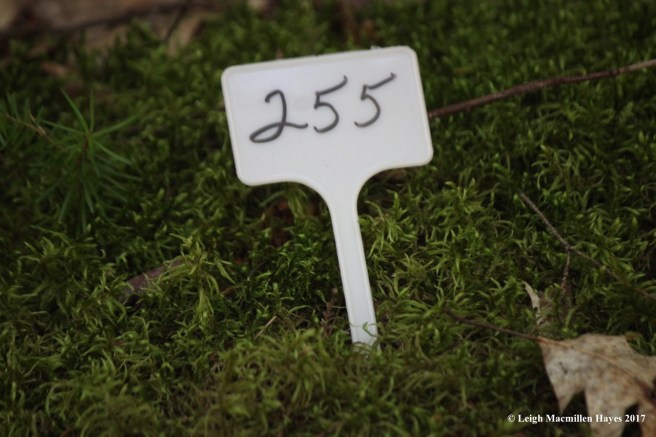
On moss-topped rocks, Ralph and his wife, Jean, had marked species to be sure to stop at for our edification. The number referred to the page in the book and for those who didn’t have their own copy, he had loaners. In this case, 255 is Pleurozium schreberi or Big Red Stem.

He picked samples so we could each take a closer look and see the reason for the name–notice that red stem? Because most bryophytes cells are totipotent–thus they have the ability to grow into a new plant, trampling them or even breaking some off can lead to new growth, so he was happy to pass small samples around.

We looked . . .

and looked . . .
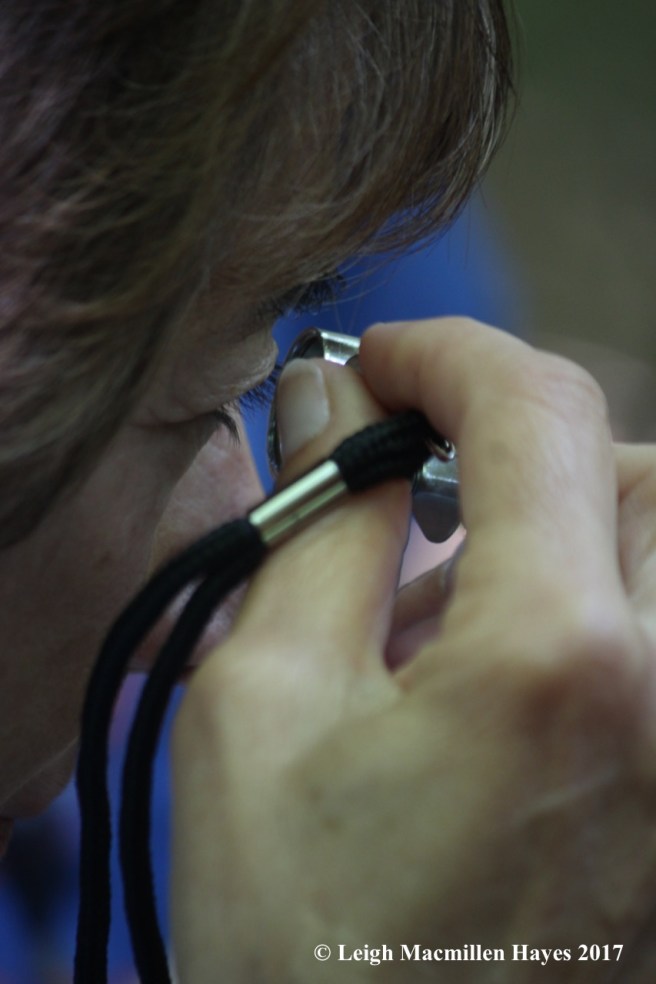
and looked . . .

some more.

Of course, sometimes we just had to take a break. Oh to be five again!

Our samples included Sphagnum pylaesii, with its pompom head,
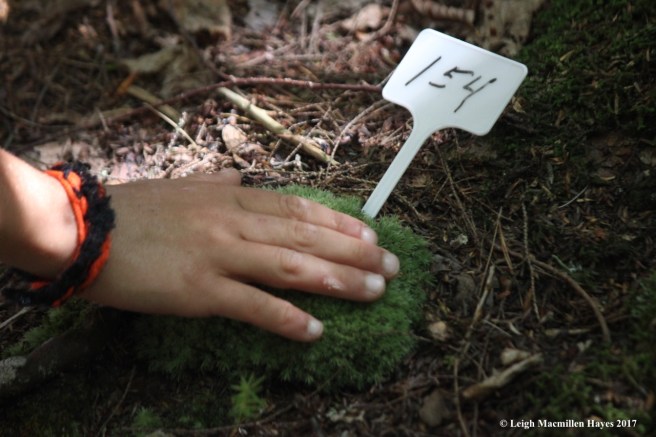
an acrocarp–Leucobryum glaucum, or pincushion moss,

the pleurocarp, Calliergon cordifloium,

and the liverwort, Porella platyphylloidea.
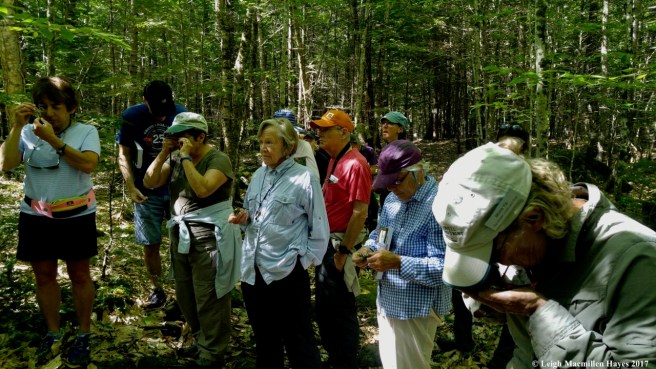
For a couple of hours, we were all thoroughly enchanted . . .
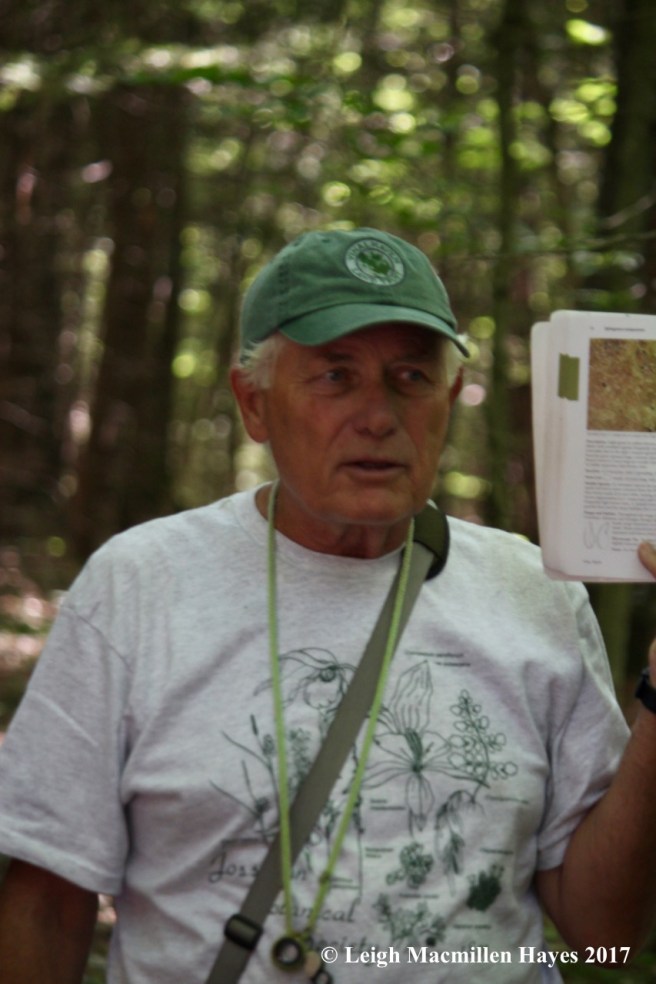
as we focused our intention on these miniature plants and this man–who opened our eyes.

Only once did our attention get diverted–for some weasel scat. Thanks to intern Kelley’s keen eyes, a few of us saw the weasel scampering about thirty feet ahead. Still . . . notice where the weasel chose to make its contribution–on a rock covered in moss in the middle of the trail.
This book was a Christmas present from my guy and I look forward to many more days spent sitting on a rock getting to know my surroundings better.
Mosses, Liverworts and Hornworts: A Field Guide to Common Bryophytes of the Northeast, Ralph Pope, Cornell University Press, 2016.

You must be logged in to post a comment.